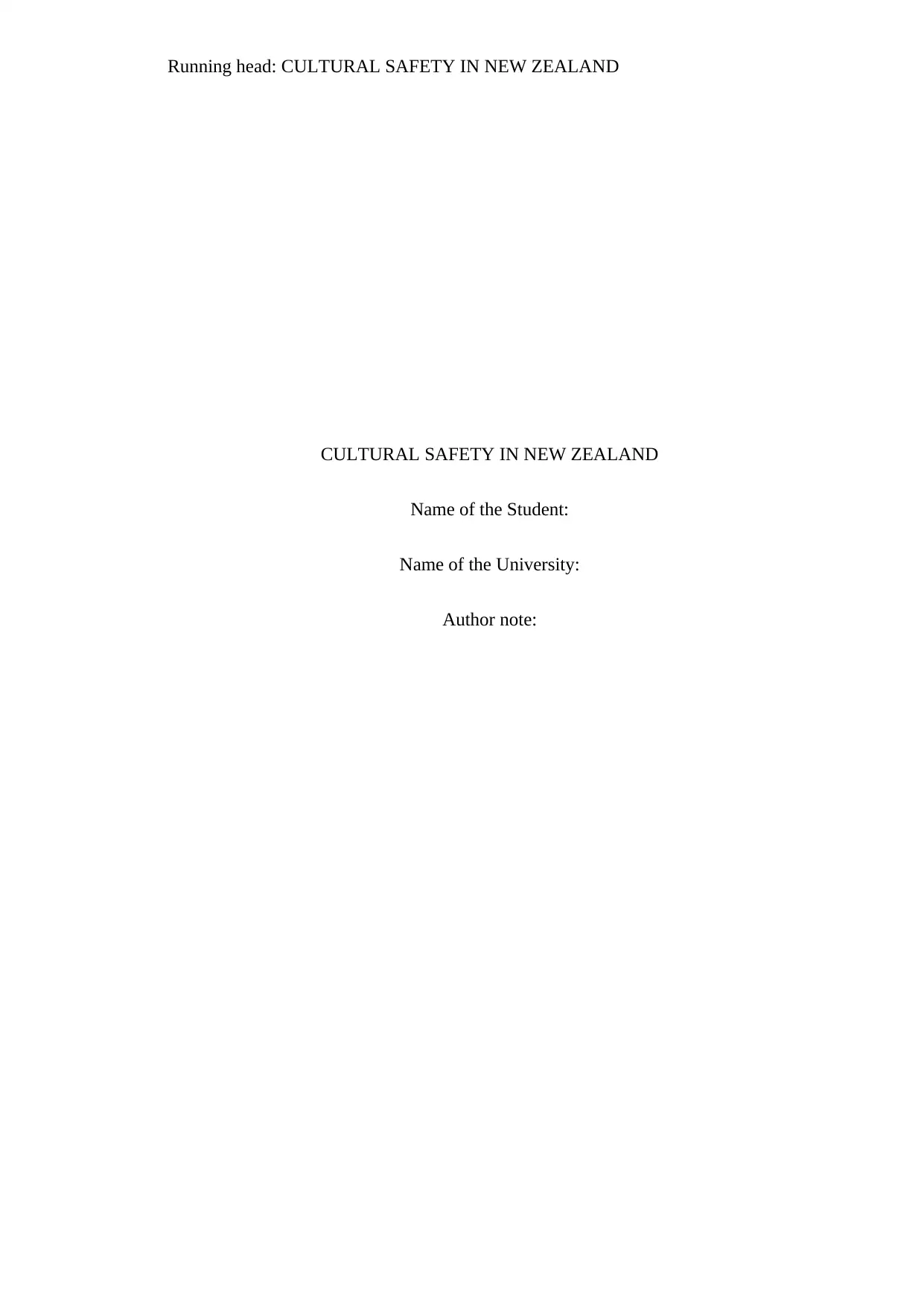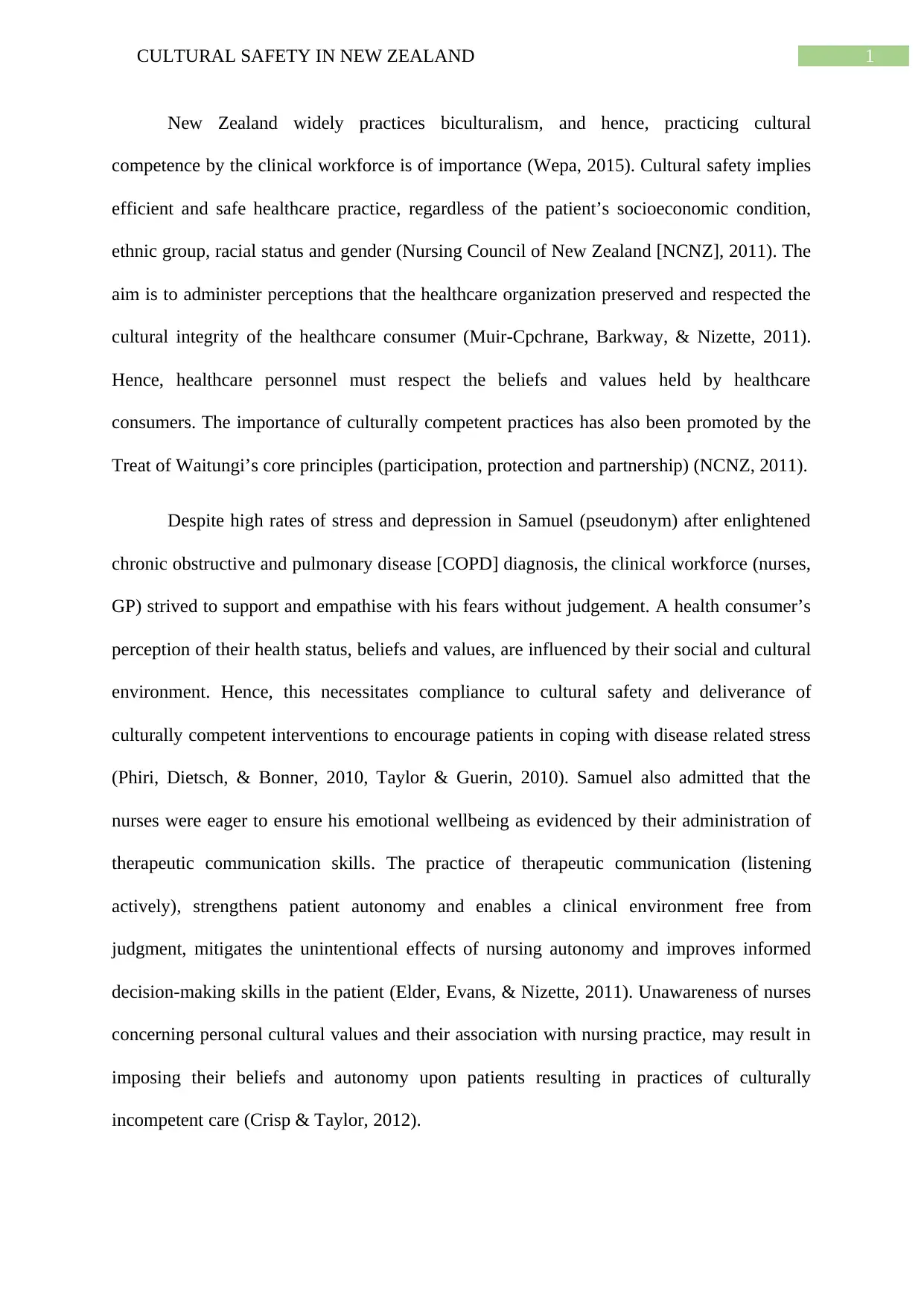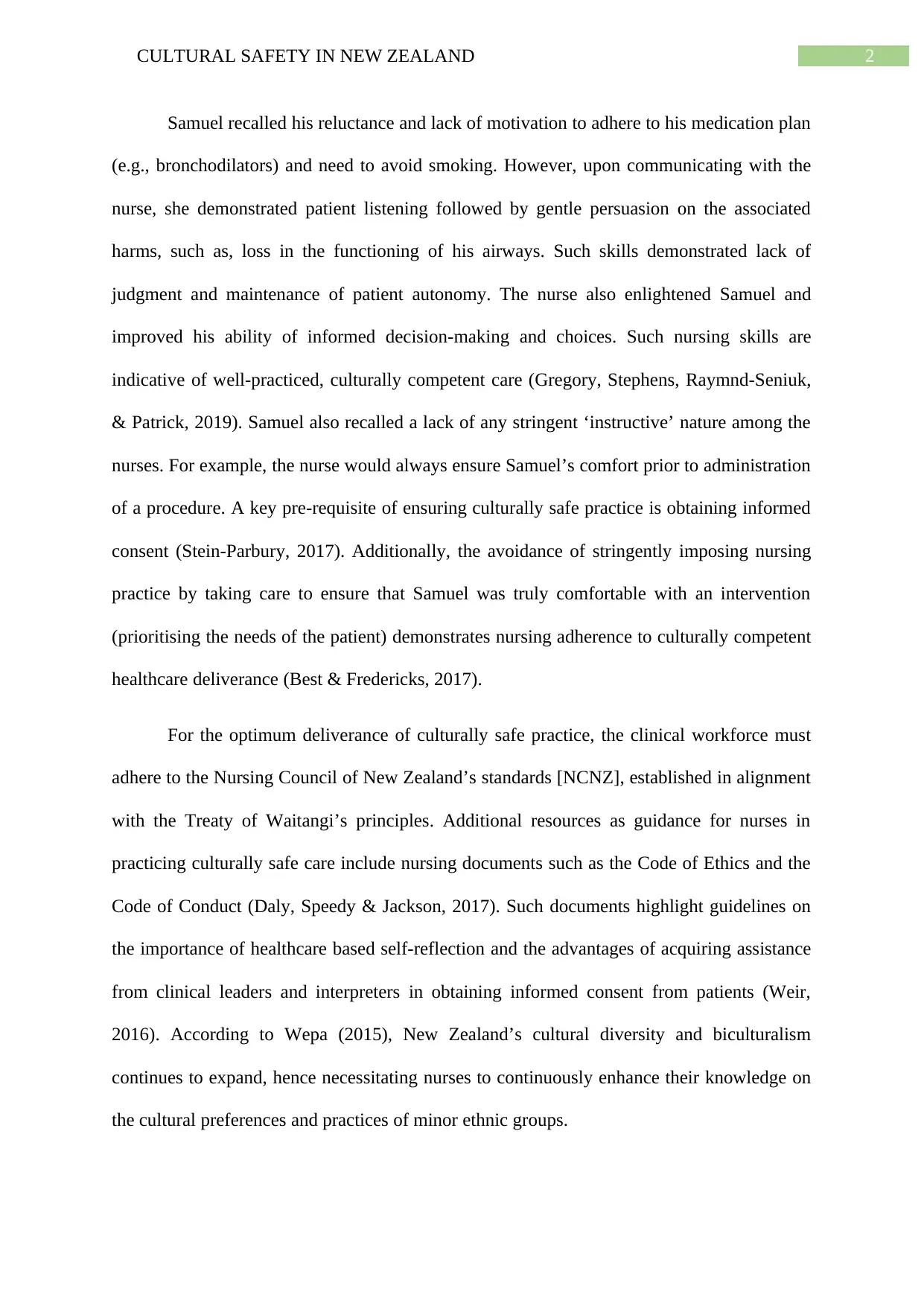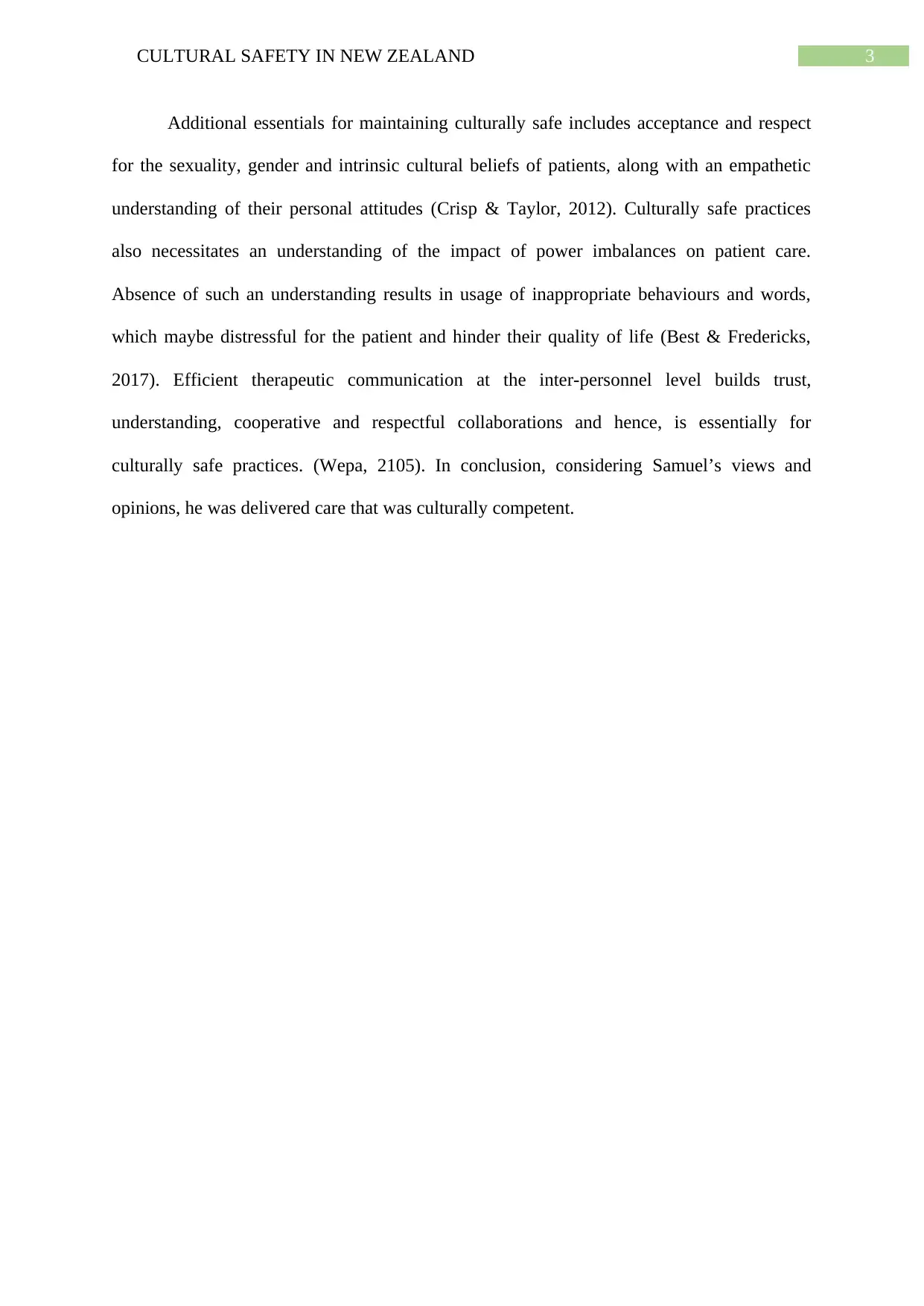Cultural Safety in New Zealand Healthcare: A Patient Perspective
VerifiedAdded on 2022/12/15
|4
|886
|70
Report
AI Summary
This report examines the concept of cultural safety within the New Zealand healthcare system, emphasizing its importance in a bicultural context. It focuses on a case study involving a patient, Samuel, diagnosed with COPD, and analyzes the care he received from nurses and GPs. The report highlights the significance of culturally competent practices, therapeutic communication, and adherence to the principles of the Treaty of Waitangi. It underscores the need for healthcare professionals to respect patients' beliefs, values, and cultural backgrounds, ensuring that care is delivered in a way that preserves the patient's cultural integrity. The report also discusses the impact of power imbalances and the importance of continuous learning to enhance knowledge of diverse cultural preferences. Overall, the report concludes that Samuel received culturally competent care, emphasizing the role of empathetic understanding and respectful collaborations in achieving positive patient outcomes.
1 out of 4










![[object Object]](/_next/static/media/star-bottom.7253800d.svg)